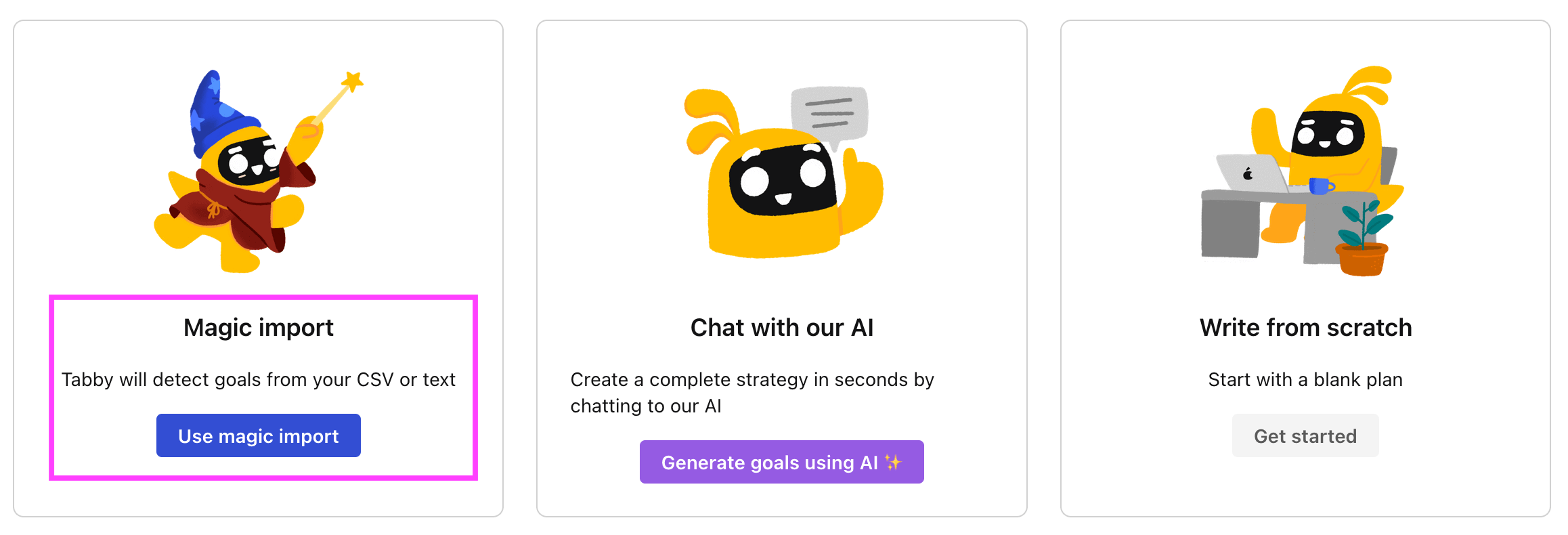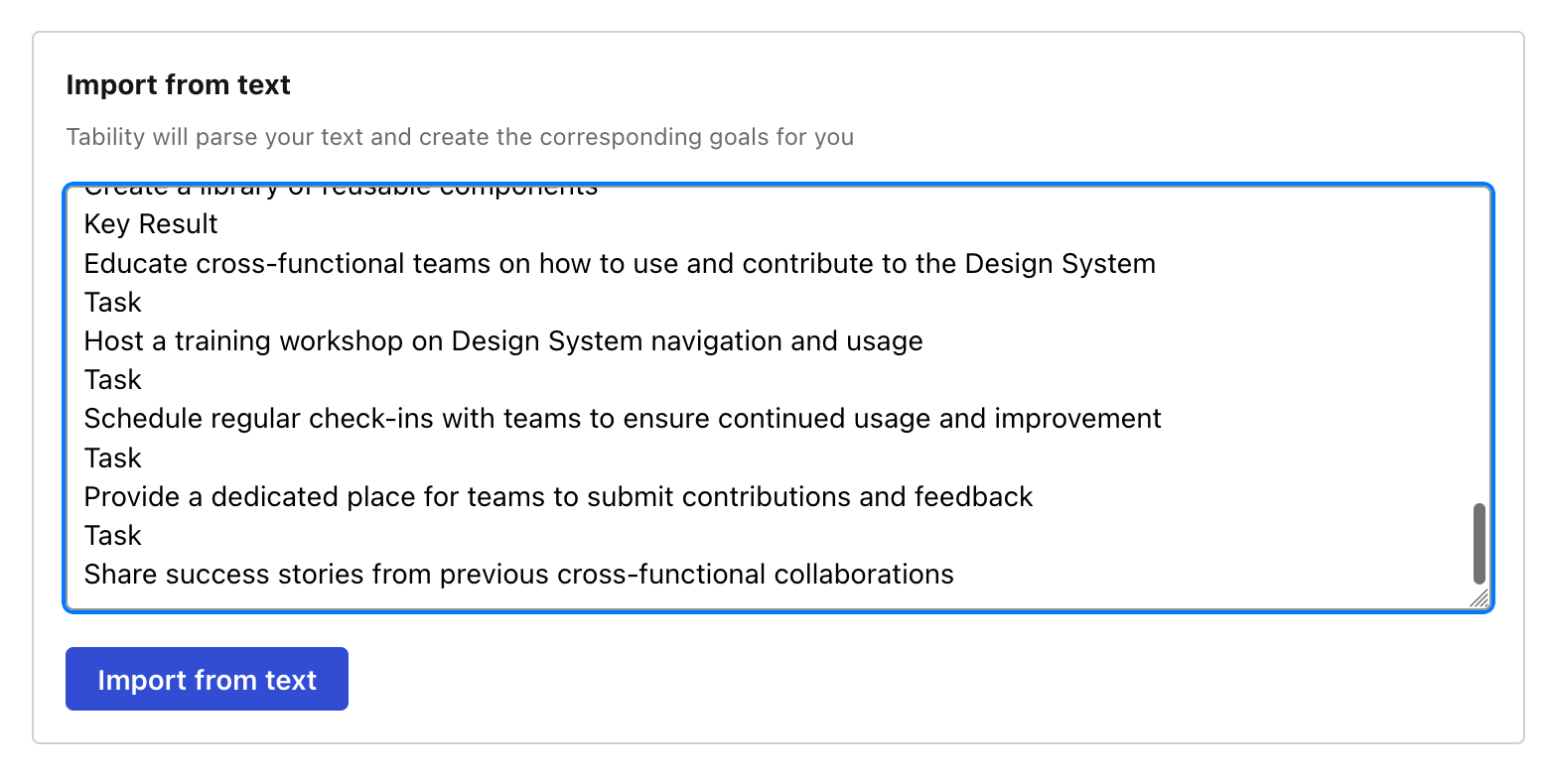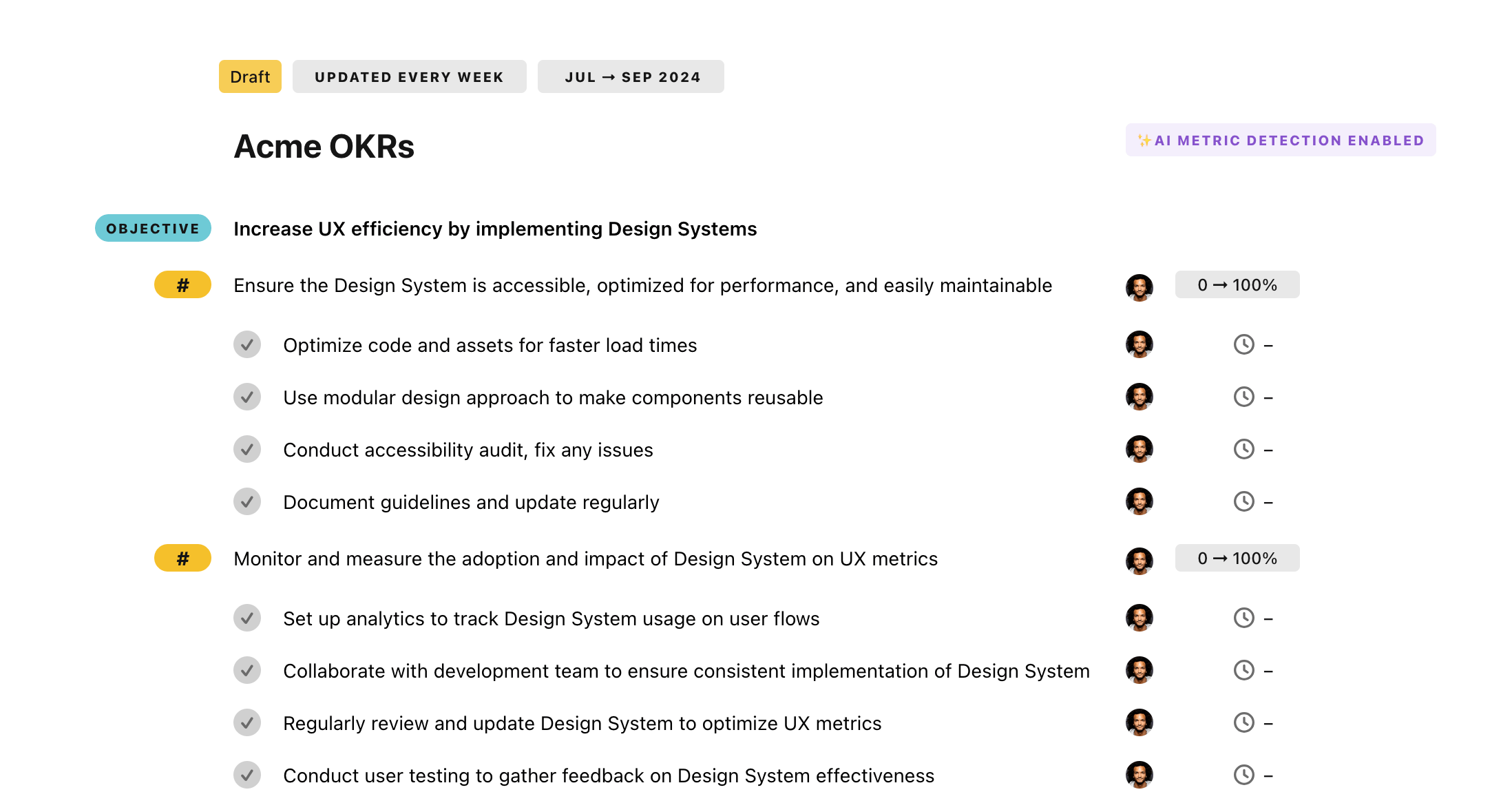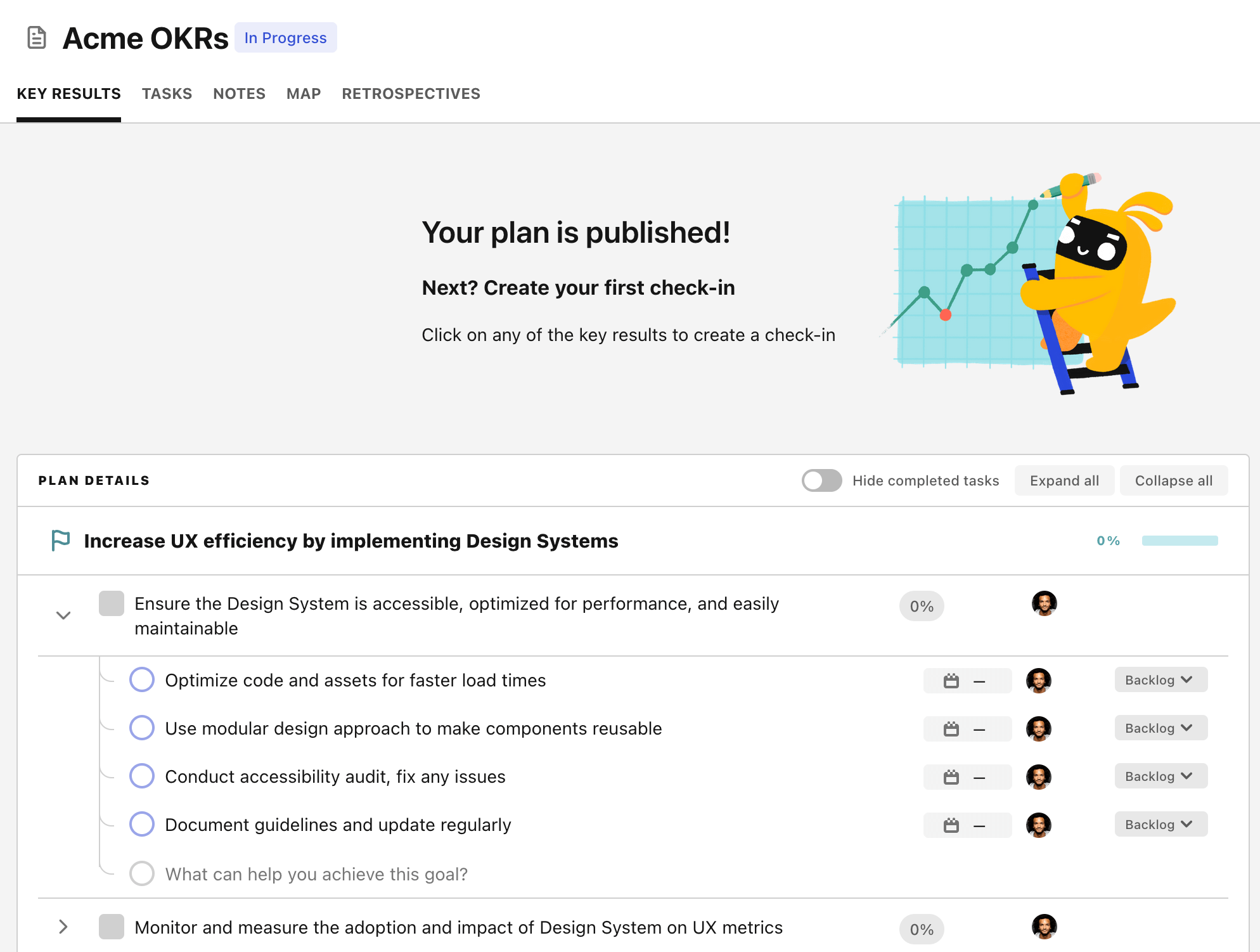OKR template to identify high-potential startups for potential investment
Your OKR template
The second objective within this OKR emphasizes the need for in-depth research into startups. This includes looking into at least 20 startups' business models for innovation and scalability, conducting thorough evaluations and narrowing down a list of prospects. Providing detailed reports on the findings is an integral part of this process.
The third section emphasizes the importance of due diligence in startup evaluation. This involves detailed investigation into the background and expertise of team members, financial performance, and market potential. Creating 10 comprehensive reports for chosen startups is considered imperative here.
The final objective involves establishing partnerships with at least two venture capitalists or angel investors. The goal is to share knowledge and potentially co-invest. This might involve reaching out to credible investors, scheduling meetings and agreements, and formalizing partnerships for mutual benefits.
ObjectiveIdentify high-potential startups for potential investment
KRAttend or participate in a minimum of 3 startup pitch events to expand network and discover new opportunities
Register and RSVP for the chosen startup pitch events
Engage with fellow entrepreneurs and exchange contact information for future collaboration
Prepare a concise pitch to present at the startup pitch events
Research upcoming startup pitch events in the local area
KRResearch and evaluate a minimum of 20 startups with innovative and scalable business models
Conduct thorough research on each startup's business model and scalability
Create a report summarizing the findings and key insights from the research
Compile a list of 20 startups with innovative business models
Evaluate the potential of each startup based on identified criteria
KRConduct thorough due diligence on at least 10 startups, assessing financials, market potential, and team
Investigate the background and expertise of the team members in 10 startups
Summarize the findings of due diligence in concise reports for each startup assessed
Research and analyze the financial statements of 10 startups for detailed assessment
Evaluate the market potential of 10 startups through market analysis and potential growth opportunities
KREstablish partnerships with at least 2 trusted venture capitalists or angel investors for knowledge-sharing and potential co-investment opportunities
Reach out to the selected venture capitalists or angel investors to express interest in collaboration
Research and identify potential venture capitalists or angel investors with established credibility
Set up meetings or calls with the identified partners to discuss knowledge-sharing and co-investment opportunities
Establish formal agreements and partnerships with the selected venture capitalists or angel investors
How to edit and track OKRs with Tability
You'll probably want to edit the examples in this post, and Tability is the perfect tool for it.
Tability is an AI-powered platform that helps teams set better goals, monitor execution, and get help to achieve their objectives faster.
With Tability you can:
- Use AI to draft a complete set of OKRs in seconds
- Connect your OKRs and team goals to your project
- Automate reporting with integrations and built-in dashboard
Instead of having to copy the content of the OKR examples in a doc or spreadsheet, you can use Tability’s magic importer to start using any of the examples in this page.
The import process can be done in seconds, allowing you to edit OKRs directly in a platform that knows how to manage and track goals.
Step 1. Sign up for a free Tability account
Go tohttps://tability.app/signup and create your account (it's free!)
Step 2. Create a plan
Follow the steps after your onboarding to create your first plan, you should get to a page that looks like the picture below.

Step 3. Use the magic importer
Click on Use magic import to open up the Magic Import modal.
Now, go back to the OKR examples, and click on Copy on the example that you’d like to use.

Paste the content in the text import section. Don’t worry about the formatting, Tability’s AI will be able to parse it!

Now, just click on Import from text and let the magic happen.

Once your example is in the plan editor, you will be able to:
- Edit the objectives, key results, and tasks
- Click on the target 0 → 100% to set better target
- Use the tips and the AI to refine your goals
Step 4. Publish your plan
Once you’re done editing, you can publish your plan to switch to the goal-tracking mode.

From there you will have access to all the features that will help you and your team save hours with OKR reporting.
- 10+ built-in dashboards to visualise progress on your goals
- Weekly reminders, data connectors, and smart notifications
- 9 views to map OKRs to strategic projects
- Strategy map to align teams at scale